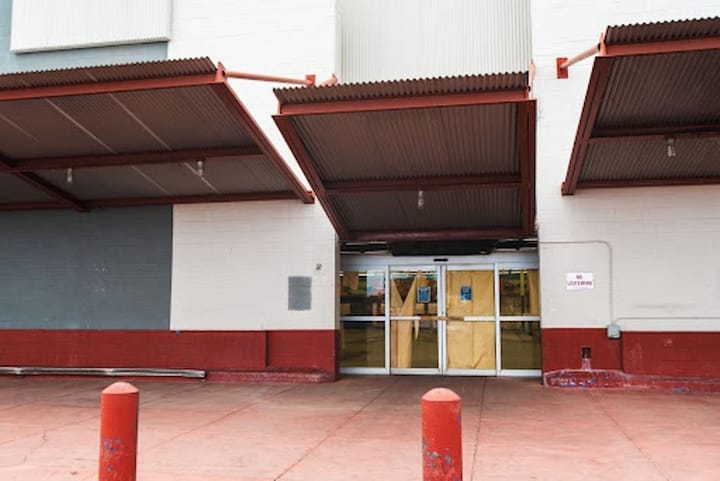Tiny home village brings hope to Tucson
The Homing Project unveiled Esperanza Village, a new transitional housing site built with quick-to-assemble microhomes to provide shelter and support for Tucson residents experiencing homelessness.
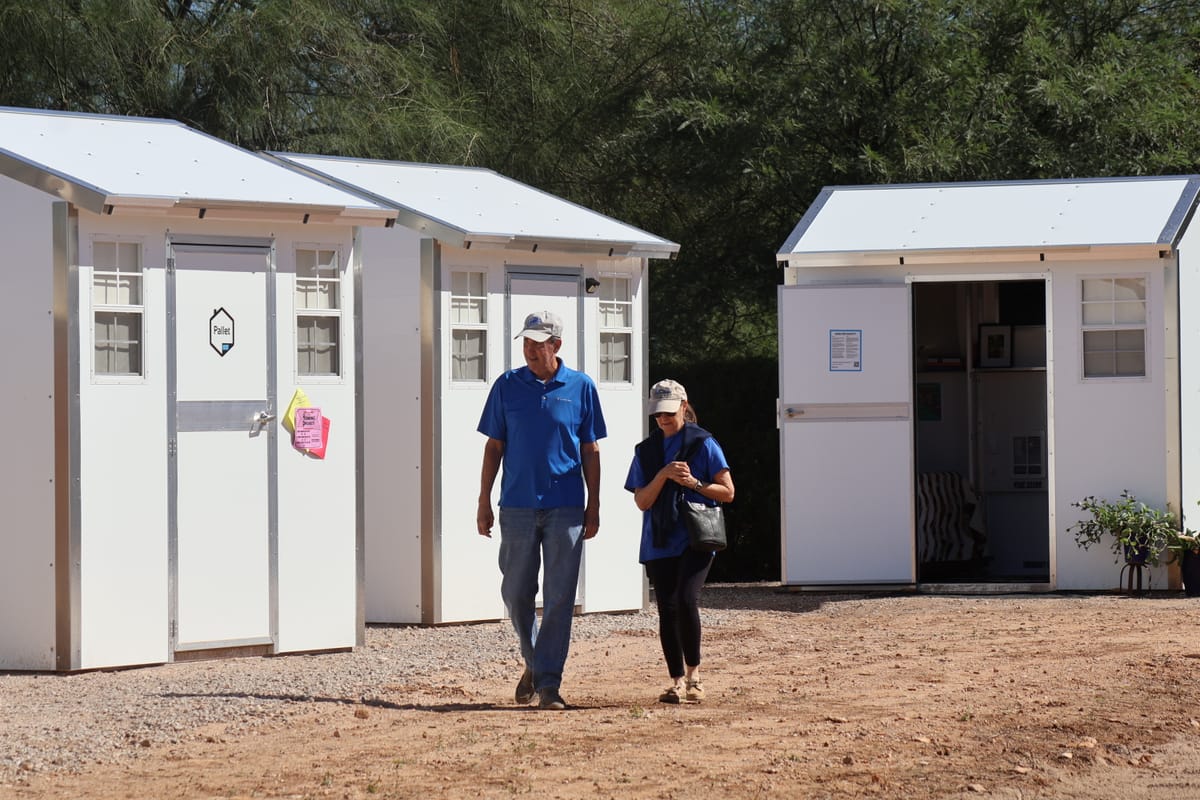
A row of bright white microhomes shimmered in the morning sun Saturday as community members and local leaders gathered to celebrate the ribbon cutting of Tucson’s first tiny home village.
Esperanza Village is Tucson’s newest transitional housing site, and the first built by The Homing Project, a Tucson-based nonprofit that provides transitional housing and support services for people experiencing homelessness.
Esperanza, which means “hope” in Spanish, reflects the project’s goal of providing stability and housing for Tucson residents experiencing homelessness. The village marks a major milestone in efforts to address homelessness through rapid, community-supported shelter.
The Homing Project began with a single encounter that stayed with co-founder Dr. Kris Olson-Garewal, a conversation with a man experiencing homelessness on a cold morning years ago.
Moved by that moment and encouraged by her son, Raj Garewal, she launched the nonprofit, which uses Pallet Shelter’s quick-to-build, climate-controlled microhomes, once designed for disaster relief, to create transitional housing for people in need.
Pallet Shelters are ready-to-build, climate-controlled tiny homes that can last up to five years. Each unit includes a sleeping area, space for personal storage and a lockable door for security.
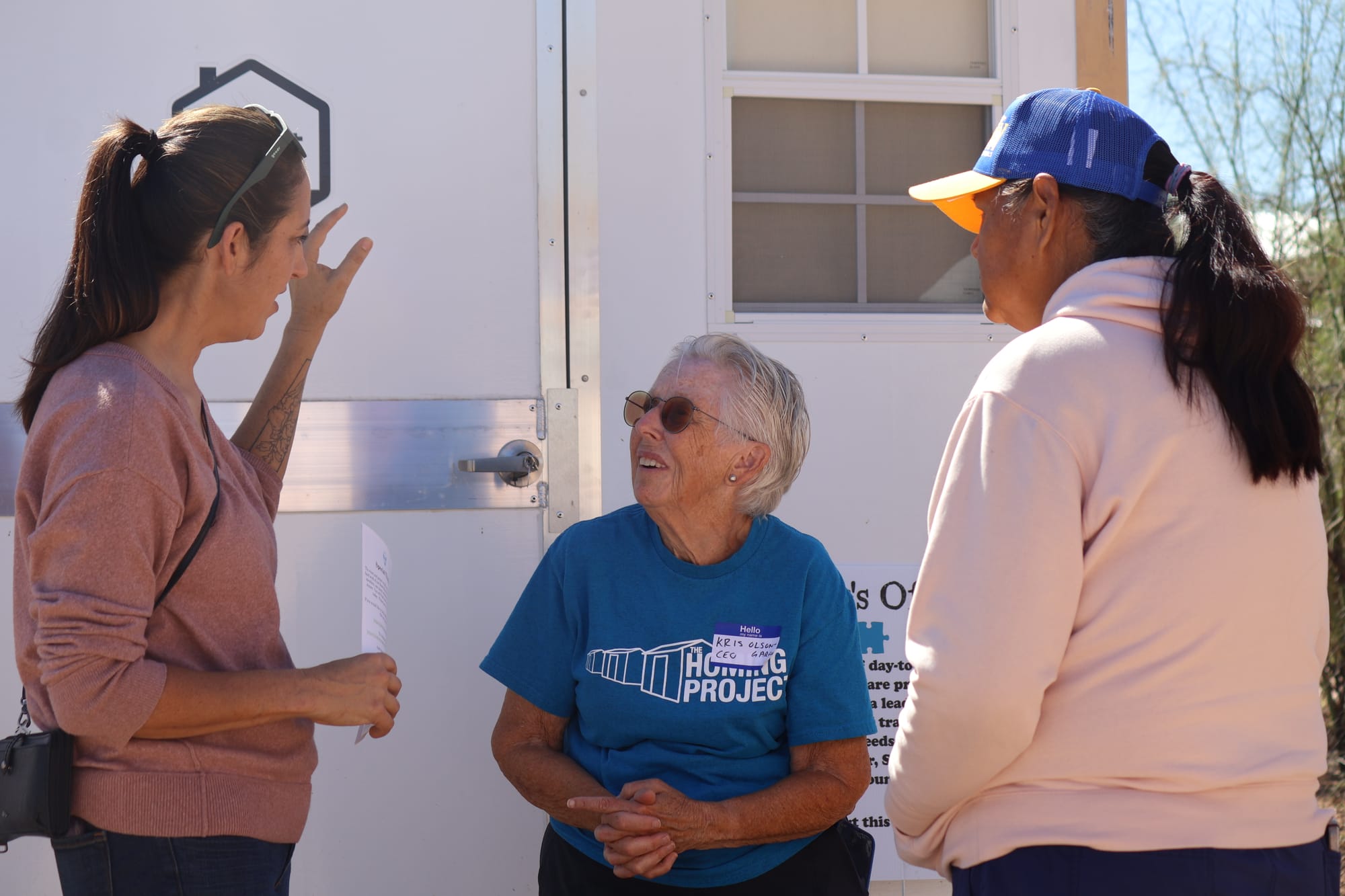
The Garewals leveraged community partnerships and donated resources and, after four years of development, broke ground on the project in April. It will soon be open to its first 10 residents, all under 25 or over 50.
Organizers describe the site as a blueprint for addressing Tucson’s growing homelessness crisis by providing quick, affordable housing coupled with support services.
“I think that projects like The Homing Project are so critical because that gap has resulted in an enormous accumulation of people experiencing homelessness and long-term chronic homelessness,” said Keith Bentele, an associate research professor at the Southwest Institute for Research on Women and an expert on homelessness and poverty reduction. “For those folks, we need more reasonable, accessible, manageable pathways for them to stabilize. The long-term solution will come faster if we can build those other housing options early.”
A nationwide housing shortage continues to affect communities across the country, including Pima County. A survey released in July found that Pima County needs more than 21,000 housing units: 8,000 to address homelessness and more than 13,000 to meet existing housing underproduction. That number is expected to more than quadruple over the next 20 years based on projected population growth.
Mayor Regina Romero highlighted the city’s recent work to bridge the gap in housing demand, from the newly installed STAR Village to the townhomes at Emery Park Place.
“When I became mayor, I said, ‘We’re going to try new things here,’” she said. “We created Housing First under my leadership. We created the Community Safety, Health and Wellness Program. We created the (Violence Interruption and Vitalization Action) sites in our community. We expanded Thrive Zones. We’ve recently created a multidisciplinary outreach team that goes out into the street, offering resources to our unsheltered neighbors.”
Romero said these projects form a continuum of affordable housing that will help the community address the complexities of unsheltered homelessness.
“There's no one-size-fits-all,” she said. “We have to meet people where they are. We need to provide multifaceted care that is adaptable and unique for each person.”
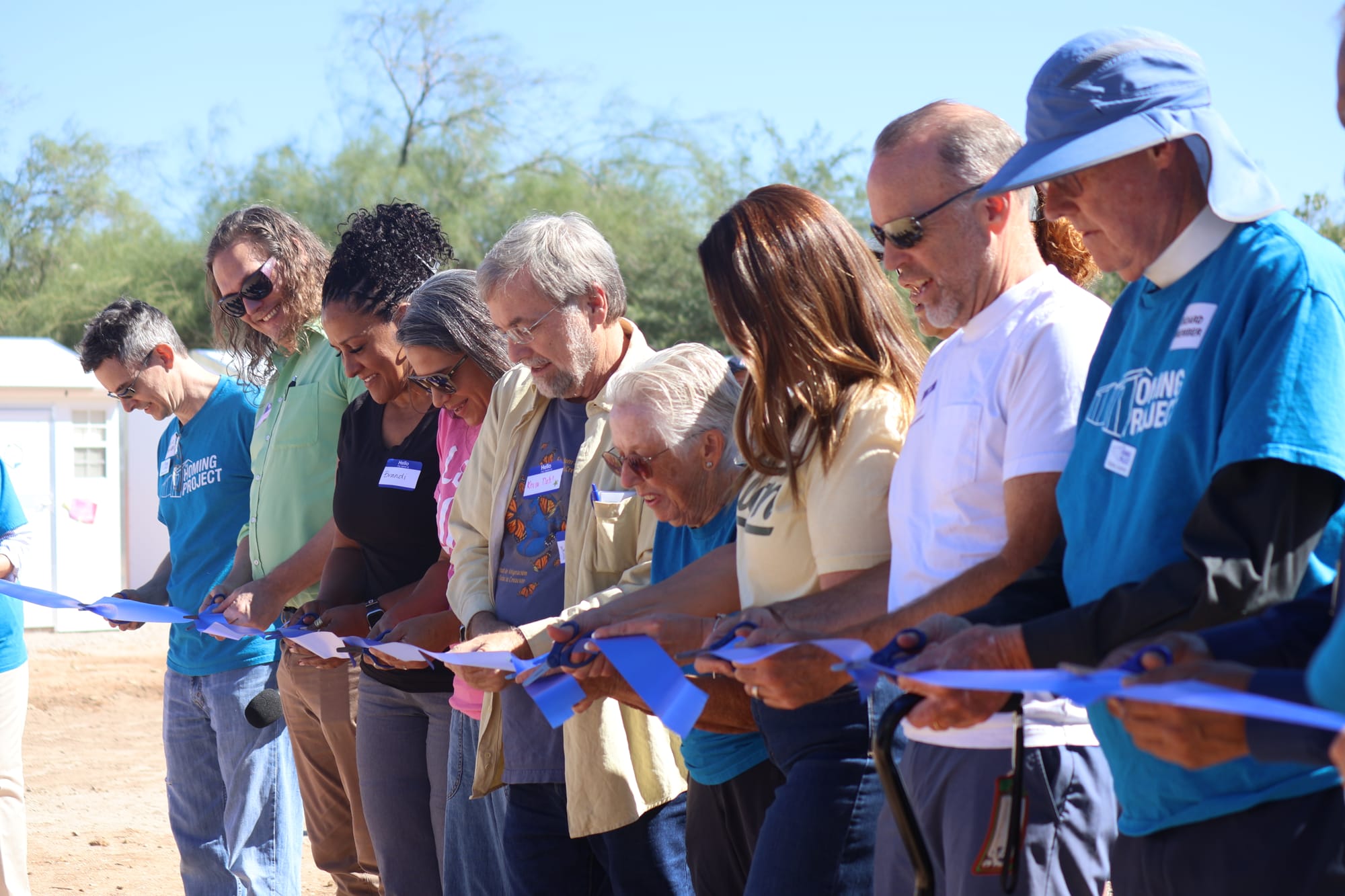
Ward 3 Councilman Kevin Dahl, who represents the area where Esperanza Village is located, praised the effort.
“We can't rest on our laurels. We have to take action,” he said. “This is the solution. I'm so proud to be a part of it.”
Esperanza Village sits on land owned by the Southern Arizona Land Trust. The idea of leasing the land to The Homing Project came at the encouragement of Patrick DeConcini, managing partner for 4D Properties, a family-owned commercial real estate business.
“We believe that it holds the promise to make a big difference,” DeConcini said. “From the private sector position, we have vacant land, and I know there are a lot of other property owners and developers who have vacant land that’s not being used. My job is that we want to donate some land, but we also want to encourage other landowners to donate land temporarily for one of these villages, so we can really spread them around and have them all across Tucson and make a big difference.”
Mark Leinhos, a Homing Project board member and chief technology officer, has been involved with the nonprofit since its inception. He said the project came to fruition through donated funds and volunteer time from the community.
“We want to have hundreds, and personally, I want to have thousands of these around the city, because that’s what we need,” Leinhos said. “There are thousands of people in the town that have to sleep in their car or in the washes, and we need as much of this and things like it as we can.”
By providing shelter, The Homing Project is taking care of the first step and giving people the “most basic thing” they need to get on their feet, Leinhos said.
“From day one, I have always felt the greatest strength of this organization is the magic and the spirit of the people who are committed to volunteer their time, energy and professional expertise to the unhoused,” said board member Nanci J. Priest.
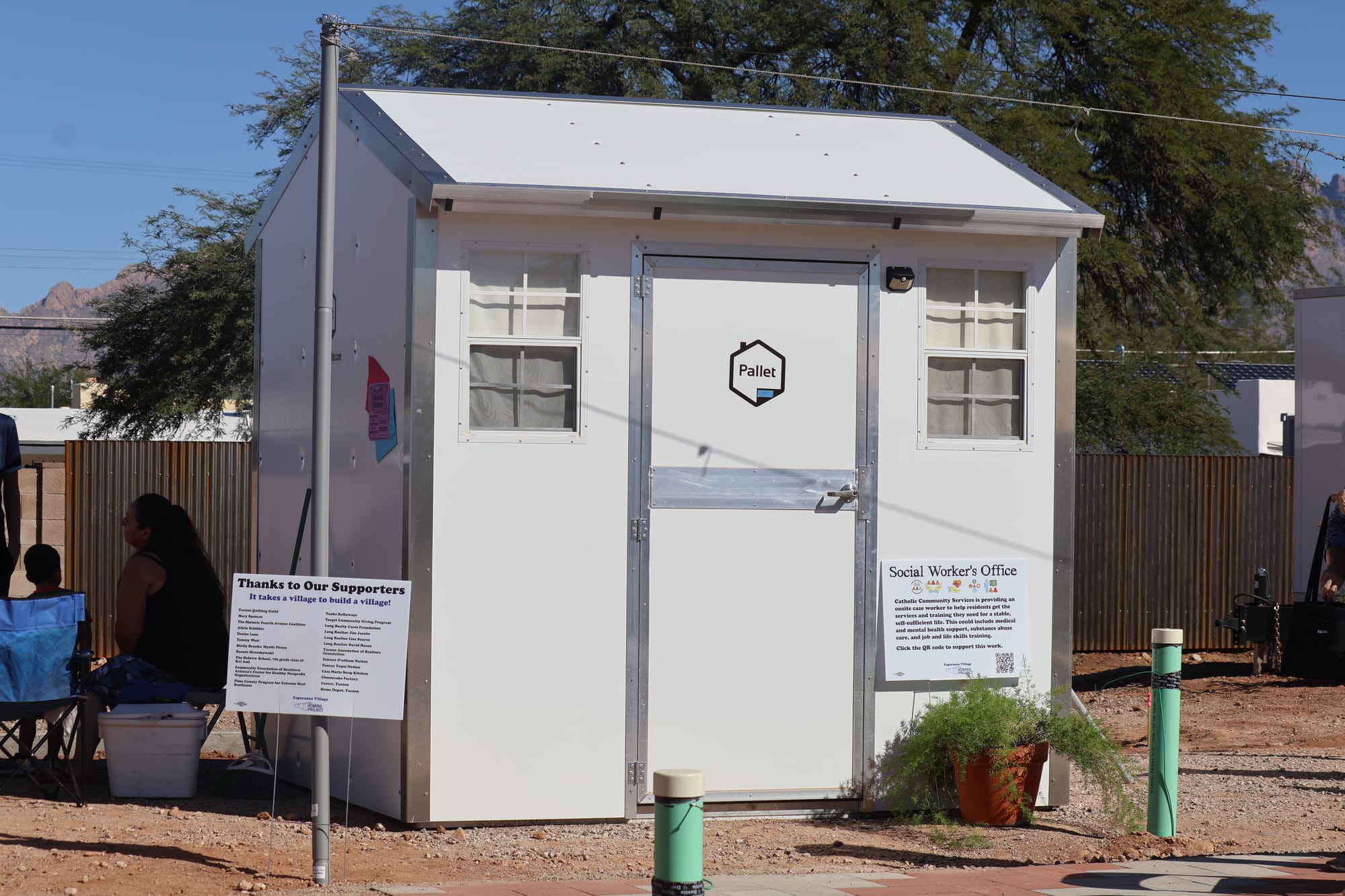
With 40 years of experience as a social worker, this endeavor closely aligns with her prior work.
“I have deep, deep, deep commitment to this demographic, and I know that they can thrive if given an opportunity,” she said.
Priest’s husband and fellow board member, Rev. Rodney Quainton, said their involvement with The Homing Project is their way of giving back to the community.
“This project excited us about three years ago when we saw it in the newspaper,” Quainton said. “I feel very strongly, as a snowbird, that we want to give to the city, not just be takers. This project — seeing it come to fruition this morning — it’s exciting, and we look forward to the next phase. This is not the end, but the beginning.”
While spirits were high during Saturday’s ribbon-cutting event, Olson-Garewal reminded the group that there is still much work to be done, calling this “just a point on the trail.”
As the ceremony wrapped up, organizers and city officials reflected on the village’s opening as a milestone, one that represents progress, but also the need to keep moving forward.
“Hope is seeing the light at the end of the tunnel, and that is what this village represents,” Romero said.
Topacio “Topaz” Servellon is a reporter with Tucson Spotlight. Contact them at topacioserve@gmail.com.
Tucson Spotlight is a community-based newsroom that provides paid opportunities for students and rising journalists in Southern Arizona. Please consider supporting our work with a tax-deductible donation.

